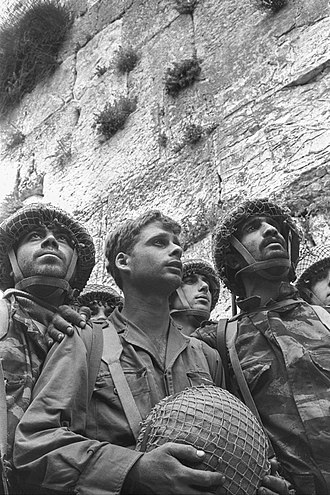As part of this series on the history of Israel, this article pertains to likely the most famous of Israel’s wars for existence, one of the greatest military victories in history. In part 2, we will cover the Six Day War and the events leading up to it. This war would profoundly change the situation in the Middle East in ways we still see in very clear ways today. If you haven’t read part 1, I strongly suggest you do so, as it lays foundation for this article.
Since 1948
Israel had in 1948 won a humiliating victory against the Arab world, but that didn’t mean the 19 years separating that victory and the Six Day War were in any way quiet.
Egypt had since undergone a coup and was controlled by Gamal Abdel Nasser. Syria was an a similar situation, with a coup bringing the Ba’athist party into power under Nureddin al-Attasi, who was a puppet of Salah Jadid. Jordan remained under its monarchy, and had since annexed the West Bank. Each swearing the destruction of Israel, for years the Arab militaries had prepared and expanded, buying Soviet equipment in bulk, onboarding Soviet advisors, and drilling for the climactic showdown with the Zionist menace.

Israel had almost tripled in population since 1948, from a bit above 1 million to a bit under 3 million over 19 years. It was thriving, with the capital of Tel Aviv going from some apartment blocks on a beach to a major Mediterranean commerce hub complete with bustling streets, night life, and high-rises. An economy of exports and consumerism had sprouted, making Israel more economically powerful than it had any business being. The IDF was among the best quality militaries in the world, boasting training and motivation second to none in the region. They even had their own nuclear weapons program. Nevermind, I’ve been told I’m not allowed to say that because it definitely isn’t true.

The 1956 Suez Crisis saw a taste of the action expected by both sides, with Egypt’s army fighting a short war against British, French, and Israeli troops in late October that year. Egypt lost handily in a military sense, but won decisively in a political one. France and Britain were bullied into stopping their war by the US, something that deeply embarrassed each of them. Israel escaped the political turmoil, instead proving to the world that the IDF was of excellent quality, and putting an end to Egyptian-backed terrorist attacks known collectively as the Fedayeen Insurgency.
The world was not the same as 1948, and the upcoming war would be shaped by it.
The Road to War
The buildup of the Arab armies did not go unnoticed, and the Israelis were not stupid. They knew they needed to be on high-alert for as long as the enemies of Zion conspired. As such, much of the IDF’s strength was focused on the border with Egypt and Syria. It was perhaps because of this fact that Soviet Intelligence delivered one catastrophically flawed report to Gamal Abdel Nasser on a fateful day in mid-May.
As intimidating as the KGB was, being the boogeyman of the Soviet Union and harbinger of death for anti-Soviet activists, it was far from perfect. In May, 1967, it delivered a report to their ally in Egypt, warning of the IDF massing on Syria’s border. Failing to check with the Syrians regarding a report concerning, you know, the Syrians, Nasser proceeded to jump the gun in a fashion worthy of the history books. Massing Egyptian divisions along the border with Israel, Nasser’s most titanic mistake came shortly thereafter. He announced a blockade of the Tiran Strait, a critical economic artery for Israel, and in so doing sealed his country’s fate. Worse for Israel was that he also blocked all Israeli shipping through the Suez canal.
As it turned out, no, the IDF was not massing on the Syrian Border. The Soviets got it wrong. But now it was too late, and the Israelis knew it. For years they had said a blockade of the Tiran Straits would be an act of war (as corroborated by international law), and Nasser had just done it. Israel was now in an impossible position. If it stood by, it would be economically strangled by the Egyptians. If it went to war, it couldn’t possibly win against the Arabs. Or could it?
Planning Focus
If there is one thing the IDF likes to do, its innovate. Terrorists in civilian houses? Roof knocking. Hamas launching a few too many rockets? Iron Dome. In a completely unwinnable situation due to enemy aerial supremacy? Just erase their air force. And that’s what the Israelis had been training for.
IDF pilots and ground crew had something the Arabs didn’t. Rapidity. A typical Egyptian air force pilot could manage one, maybe two missions per day. The Israelis were trained to do four. The Israelis, despite having 500-550 less aircraft than the Arabs in total, could now bring twice as much force to bear per day. This ability would become the linchpin of an operation for the fate of Israel itself: Operation Focus.

Focus was a suicidal plan in any sane mind. The Israeli Air Force, or IAF, was about to attempt one of the most daring operations in military history. A massive series of three waves would try and obliterate the Egyptian Air Force before it even left the ground as maintenance crews would work in record-breaking time to refuel and rearm almost every operational jet the Israelis had. It was truly all or nothing. All 200 jets the Israelis could muster were called up. If they failed, the IAF was doomed to a slow death at the hands of the more numerous Arabs. If they failed, the element of surprise was gone. If they failed, Israel itself was dead.
The Finest Hour
As the Israeli pilots woke at sunrise, they ate breakfast and headed to their briefing rooms. The atmosphere for the last several weeks had been tense. They had trained for over a decade after the Suez Crisis for this exact moment. Their officers delivered speeches and made the gravity of the situation clear. Absolute cool was mandatory. Zero radio communication whatsoever was permitted. If one of their friends went down in a fireball, the pilots had to keep on moving. Nothing was more important than the mission, than the nation. As the pilots took off in silence, their ground crews waited anxiously for their return.
They flew between 35 and 50 feet, nearly touching the ground. Egyptian radar wouldn’t pick them up, and the SA-2 anti-aircraft batteries would be unable to combat aircraft flying at such a height. Israeli pilots sped toward their target, skimming the Mediterranean Sea so closely they could smell the salt in their cockpits. Israeli intelligence had, for years now, been collecting every minute detail of the EAF’s routine. The Egyptians had also inadvertently made the Israelis’ job the easiest possible.

The Egyptian AA grid was completely deactivated as Egyptian Field Marshall Abdel Hakim Amer’s personal plane was en-route to Egypt, with the government distrustful of nervous AA gunners. The Egyptian Chief of the Air Force was at his daughter’s wedding, and the Chief of the Army was on vacation. The Egyptians had also assumed that, if an attack would take place, it would be at dawn, and as such the Egyptian air patrols had already made their pre-breakfast sweeps, and were just then landing at their airbases.
All these factors combined to create the most humiliating defeat in Egyptian history. While the Egyptian planes were in the middle of landing and taxiing, the Israelis arrived. Eleven air bases across Egypt were decimated, their runways rendered unusable. 200 vulnerable planes were wrecked, and the first wave had knocked out much of Egypt’s AA grid. The Israelis headed back to base, where IAF ground crews would perform record-shattering refueling and rearming.
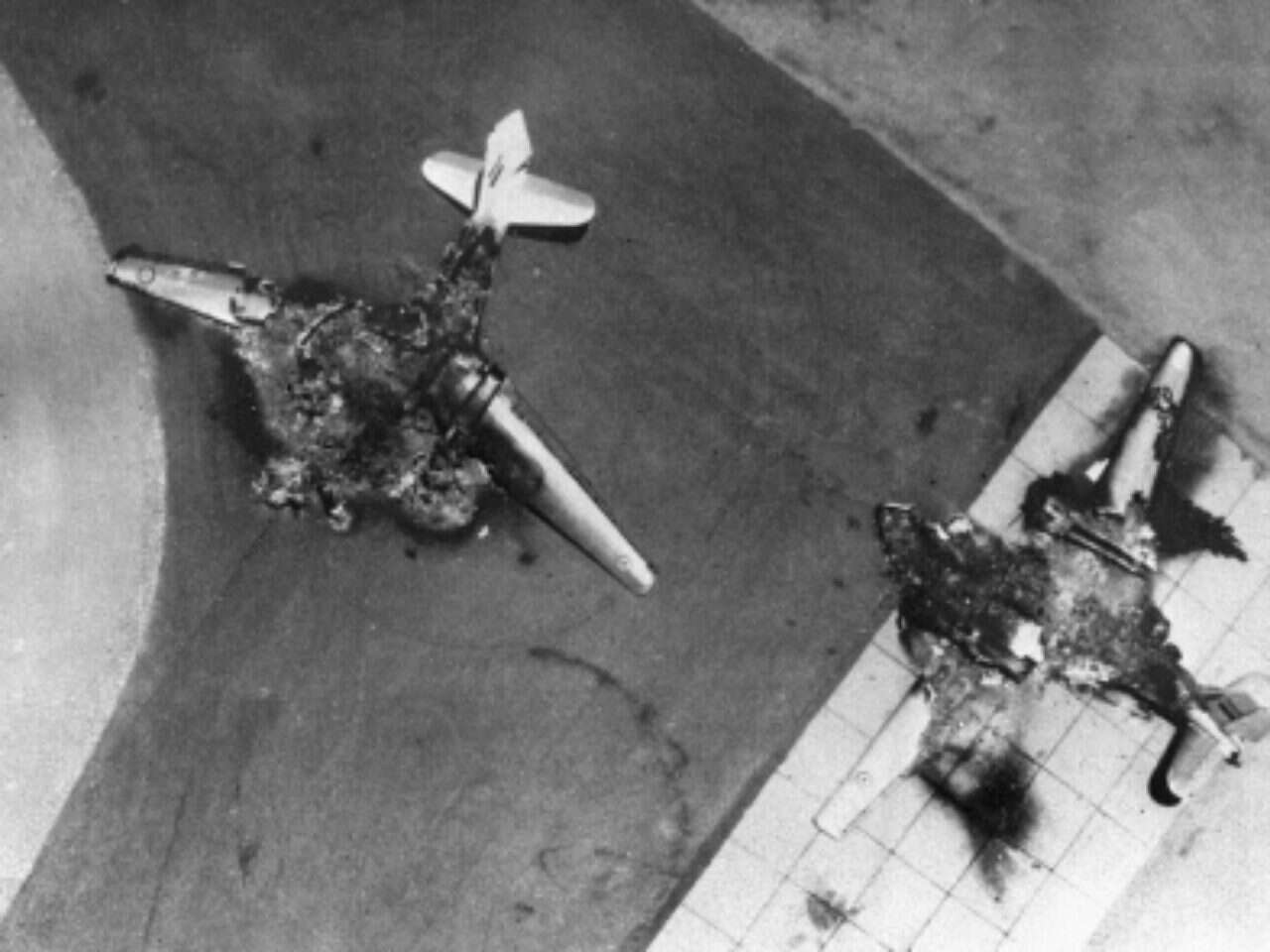
In the span of 7 minutes (some claim 5), the IAF planes were back in the air, and wave two was just as successful as the first. Yet more Egyptian planes, unable to take off their cratered runways, were decimated in the second wave. The third was the same, with a rapid refueling, rearming, and strike on Egyptian airbases. The EAF was gone. 338 of its original 420 combat aircraft layed smoking on the tarmac.
The same thing happened the next day against the Jordanian, Syrian, and Iraqi air forces as those countries entered the war. In all, for 19 downed jets, the Israelis had taken out a staggering 452 Arab combat aircraft. Israeli aerial supremacy was now assured, with those Arab planes that remained having been grounded by runways full of bomb damage. And because the IDF had achieved total surprise, the mobilized IDF had only to contend with the partially-prepared Arabs.
To the Suez
Now that the IAF had obliterated the enemy air forces, the IDF ground forces had a fighting chance. But just because the air was under Israel’s control didn’t mean the army’s job was a piece of cake. The IDF’s soldiers still had to break through heavy Egyptian defenses and reach the Suez Canal before the Egyptians could mobilize. Hours after Operation Focus had commenced, the IDF’s 11 brigades on Egypt’s border began rolling west.
Crossing into Egypt at Khan Yunis and Abu-Ageila, brigades under Major-Generals Ariel Sharon, Israel Tal, Avraham Yoffe, and Yeshayahu Gavish quickly advanced deep into Egyptian territory, finally encountering heavy resistance at El-Arish in the north, and Abu-Ageila further south. IDF forces ran into issues with minefields and artillery during both battles, but through a flanking maneuver at Abu-Ageila and sheer will at El-Arish, the Israelis won both battles. With 5 of 7 Egyptian divisions in retreat, the IDF continued on to the Suez Canal.
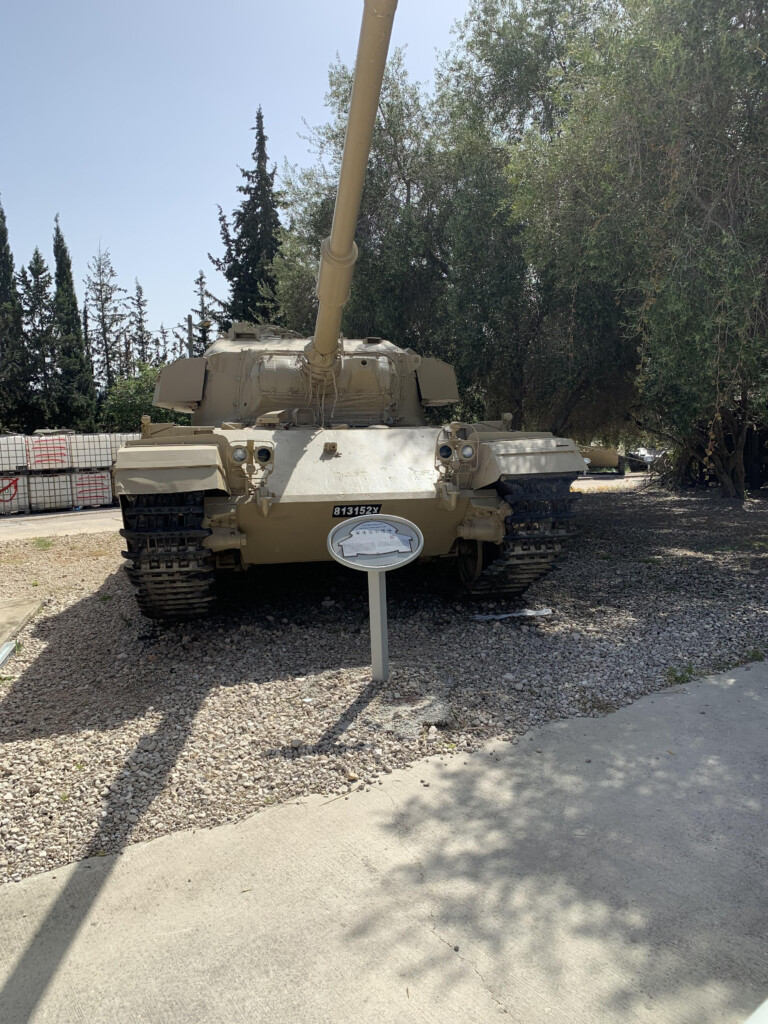
Though there was fierce fighting at Bir Gafgafa and the mountains in the west of the Sinai, there was nothing the Egyptians could do. What units could make it across the Suez Canal to safety did so. Those that were surrounded, such as those in Gaza City or in the Sinai’s mountain ranges were squeezed out over the course of 4 days. By June 8th, the Sinai was entirely under Israeli control, and the front closed.
Seizing the Golan
Taking the Golan Heights from Syria would be more difficult. For years the Syrians had shelled Israeli settlements from their positions in the Golan, and the Israelis viewed it as critical to national security that the heights were wrestled away from the Syrians. While the Syrian force of 70,000 appeared invincible against Israel’s few tens of thousands, the utter idiocy of Syria’s army came through as the IDF’s saving grace.
Syria had had a rough few years. A string of coups and subsequent purges left the army in shambles, its men commanded by idiots. The officers were selected on loyalty, not competence, and the average rifleman hated the organization he was a part of. They were treated badly and trained poorly. This helps to explain the decisions Syria’s army made during the Six-Day War.
On the fourth day of war, after constant shelling from the Syrians, the IDF decided enough was enough. If Syria wanted in on this war, so be it. After being tricked into joining by blatant Egyptian lies regarding victory in the Sinai, the Syrian government decided to help out by shelling the Galilee, but not trying to advance.
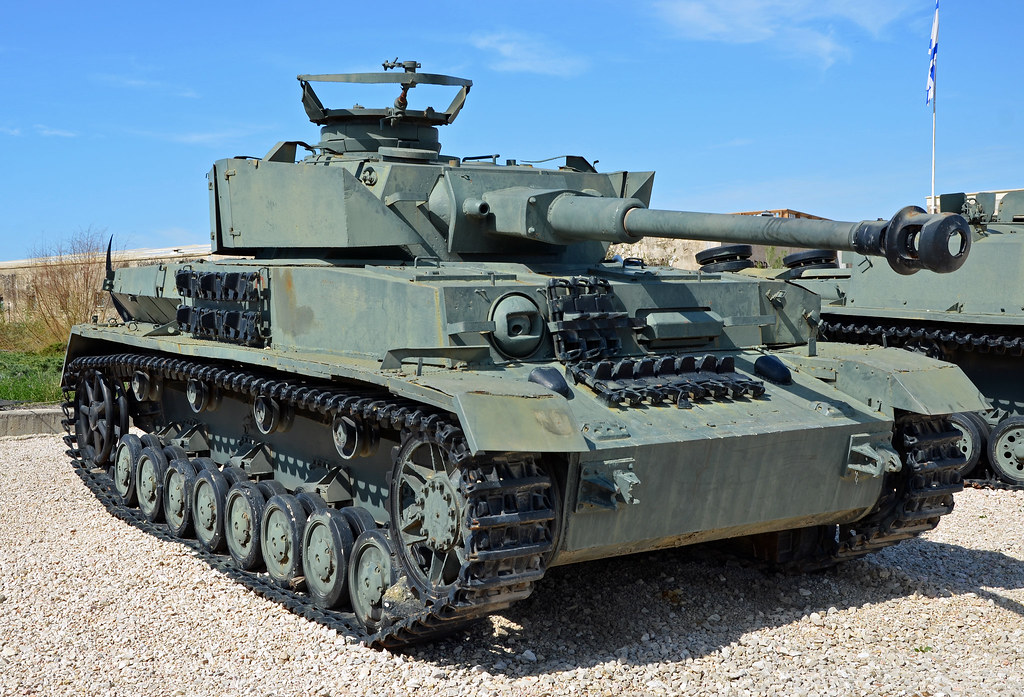
Defense Minister Moshe Dayan had advocated against an invasion of the Golan, believing it would be an extremely costly victory, and would prompt the Soviet Union into meddling with the war. General David Elazar disagreed, and thought that Syrian incompetence would tip the scales. Eventually, Dayan acquiesced, and with the approval of prime minister Levi Eshkol the operation began. As the tanks of the 8th Armored Brigade rolled into Syria alongside the elite Golani infantry brigade, trickery by Mossad would give the Israelis another slight edge.
Eli Cohen was an Egyptian-born Jew who was recruited by Israel’s state intelligence service, Mossad. He, between 1961 and 1965, provided vital intelligence to the IDF regarding Syrian defenses in the Golan, and is revered by Israel as one of its greatest spies. Though he was sadly caught and executed just before heading home for Israel permanently, he had fed the IDF the intel it would need to perform an invasion while outnumbered and in bad terrain. The locations of various bunkers, defense lines, and command posts were all known by the IDF thanks to his efforts.

The Israeli tanks began their assault on the 9th of June, and initially it did not go well. As the tanks and bulldozers cleared the Syrian minefields, they came under heavy fire from dug-in Syrians, and had no choice but to keep moving. The Israelis took heavy casualties from various Syrian-controlled hills along the roads to their objectives, but pressed on regardless. Confusion and units losing their way slowed the advance, and meant that the Syrians now had more time to organize a counterattack. The IDF managed to, after hours of fighting, capture its objectives at various forts and defense posts, and waited for the inevitable Syrian counterattack.
Remember that idiocy within Syria’s military? Here it is in all its glory. The weakened Israeli spearheads were vulnerable to counterattack, and the Syrians had the forces to conduct said attack. But did they? No. Why? Likely a combination of complete lack of communication, idiot officers, and morale-shattered troops all played a factor. But for whatever reason it may have been, the Syrian counterattack never came. As the IDF managed to flank more and more Arab positions due to their lack of knowledge regarding where the Israelis were, the picture became clear. In two day of heavy fighting, the IDF had just taken about 695 square miles of land.
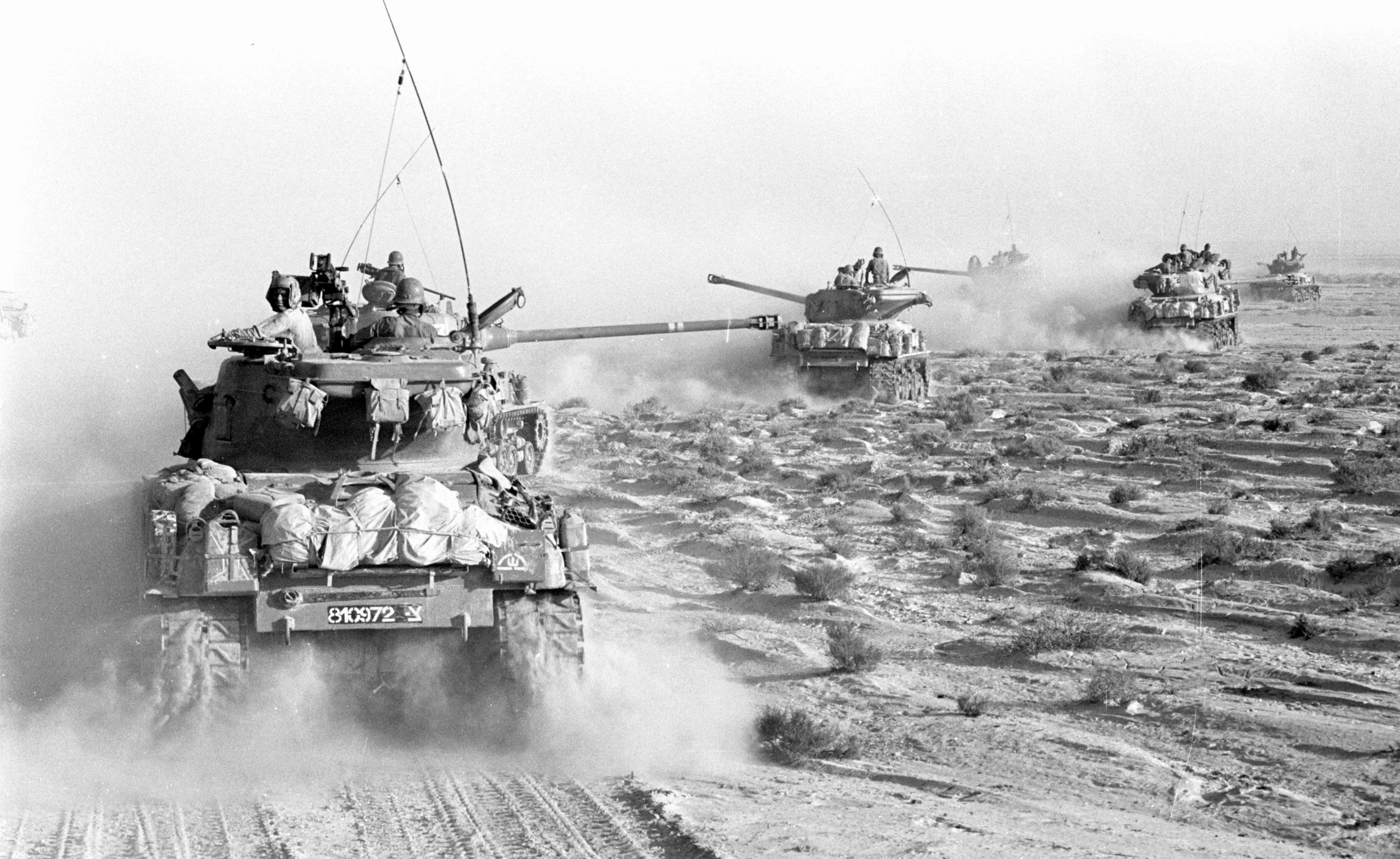
The Golan remains, to this day, Israeli.
Back in the West Bank
Perhaps the most significant affect of the Six-Day War was the status of the West Bank, and the retaking of Jerusalem. After 1949, East Jerusalem and its many holy sites fell under Jordan’s control. The Jewish Quarter was emptied out, and synagogues that had been there for many hundreds of years were torn down. No Jew had lived in the Old City for almost 20 years. The State of Israel was about to change that.
Like Syria, Jordan had been tricked into this war. Egyptian claims of decimated IAF combat power convinced King Hussain of Jordan that the time was now. Machine gun and rifle fire in Jerusalem escalated into mortars and anti-tank guns, as the IDF put into action its plan to defend against a Jordanian invasion from the West Bank. Up and down the border, Jordanian artillery fired on IDF units, as the Israelis sent a message to Hussain saying they would back down if he did. Hussain stated that it was too late, that “the die was cast”. As 6000 Jordanian artillery shells fell upon West Jerusalem, the Israeli cabinet hesitated. They decided to try and avoid a ground war.

Instead, a series of airstrikes devastated the Royal Jordanian Air Force, or RJAF. But these only served in Hussain’s mind to prove it was, indeed too late. As Jordanian Army units began seizing hills around Jerusalem, the Israelis also decided it was too late. The late afternoon of June 5th witnessed an operation to encircle East Jerusalem begin, with the Harel and Jerusalem brigades forming a pincer around the city. The northern pincer saw the Battle of Ammunition Hill, in which 150 Jordanian troops fought tooth and nail against roughly as many Israelis for control of the strategic hill. 71 Jordanians and 36 Israelis lied dead around the hill, and after hours of battle an Israeli flag flew above the fortifications. The Jordanians in Jerusalem were gradually squeezed out, and the holiest city on earth was now under the Jews’ control for the first time in almost 2,000 years.
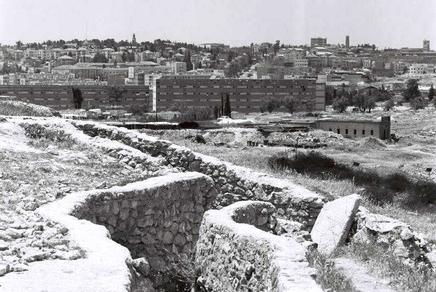
Meanwhile, Latrun saw its second war that day. The Israeli victory at Latrun was quite the opposite of its defeat in 1948. Instead of a bloody battle for the top, the only resistance the Israelis experienced from the Jordanians was from some very stubborn landmines. Across the West Bank, the story was much the same. Jordanian units put up a good fight, but just couldn’t contend with an IDF that had prepared for this moment for 18 years. By the end of June 7th, day 2 of the war, the West Bank was under IDF control.
The Jews take Jerusalem
One very special moment in this offensive took place within the encircled city of Old Jerusalem. Located in the Old City of Jerusalem is an incredible amount of history, and many holy sites. The Dome of the Rock, the Church of the Holy Sepulchre, the Mount of Olives, and a million other special places are located there. Among them is a place special to me and the rest of world Jewry. The Western Wall is the holiest site in Judaism by far, and is the physically closest place of prayer to where the Temple Mount once stood (the mount itself is occupied by the Dome of the Rock, where Jews are not permitted to pray whatsoever). For years, not a single Jew lived in the Old City due to Jordanian policies, and on June 7th, Moshe Dayan order the elite Israeli paratroopers to capture it.
Fighting in the Old City was a small nightmare. The IDF had decided not to use tanks or artillery because that’s a good way to accidentally blow up a holy site. Instead, the Elite Israeli Paratroopers would have to fight street by street, without support, for Jerusalem. The winding, narrow streets and overlapping walkways made navigation difficult, and wrong turns were made that resulted in casualties and ambushes. But after all was said and done, by June 7th the Old City and the holiest site in Judaism was, after 2 millennia of occupation, back in Jewish hands. The paratroopers of the 55th Reserve Brigade were photographed shortly thereafter, in awe of what they had accomplished. Paratroopers at the Western Wall remains arguably one of the most meaningful images in Judaism, and a testament to the resilience of a people.

Ceasefire Agreements
Israel had just scored among the most unexpected wins in military history, and by June 10th, the Arabs knew it. Every Arab nation involved sued for peace urgently, attempting to prevent the catastrophe a continued Israeli offensive might cause. The Israelis had no interest in going any further, and so agreed to a ceasefire after 6 days of heavy fighting. Israel had roughly tripled in size by day 6, with that land including the holiest city on earth, and the West Bank as a whole, something that has shaped the public perception of Israel ever since.
So I leave you with this until part 3, when I will cover the 1973 Yom Kippur War, the time the Arabs won 2 battles and claimed that meant they won the war. Until next time, keep the current conflict in your prayers.


